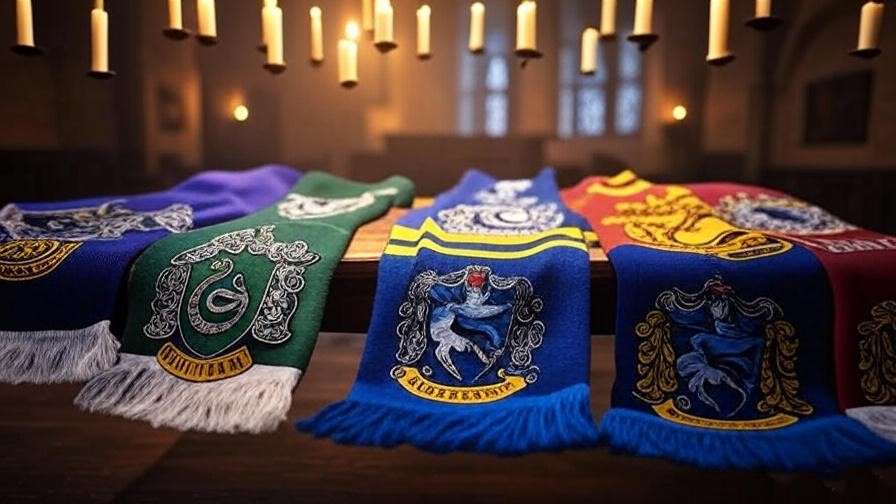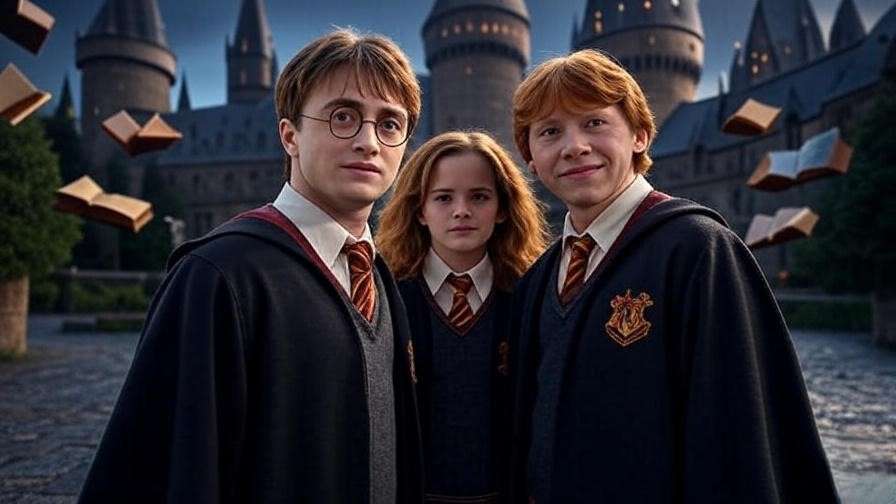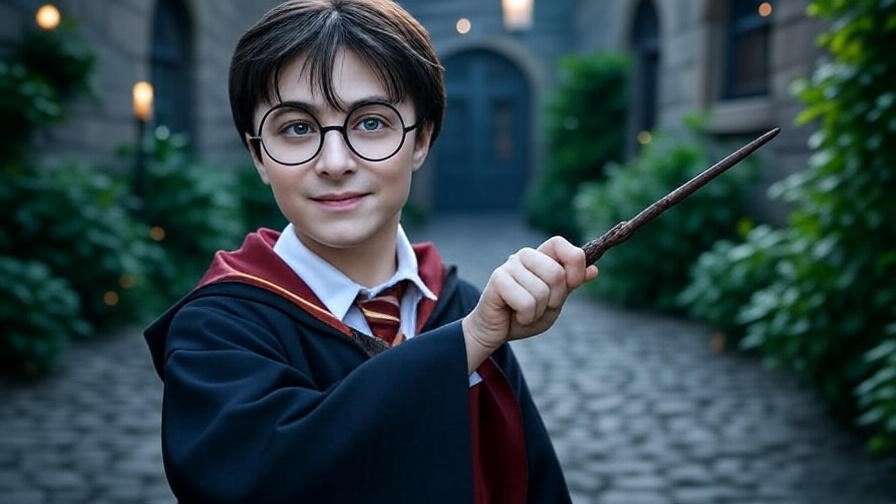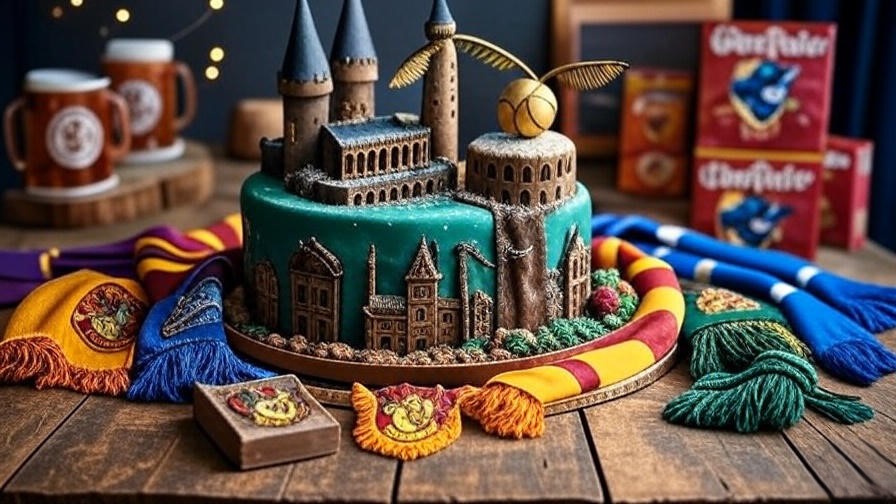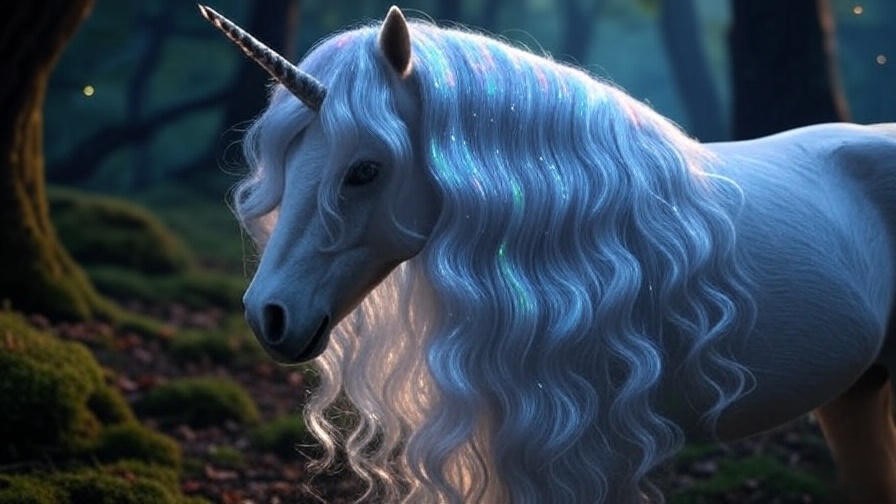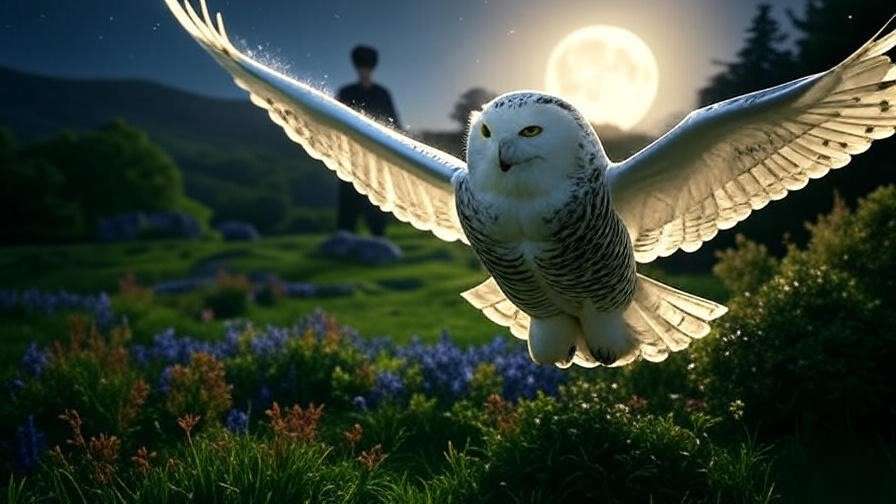Picture yourself standing in the snowy courtyard of Hogwarts, the iconic Harry Potter scarf in movie scenes fluttering in the crisp winter air, instantly signaling your house pride—Gryffindor’s bold burgundy, Slytherin’s sleek green, Ravenclaw’s serene blue, or Hufflepuff’s warm yellow. For fans of the Harry Potter franchise, the scarf is more than a costume piece; it’s a symbol of belonging, a tangible connection to the Wizarding World. Whether you’re a cosplayer crafting a movie-accurate Hogwarts uniform, a collector seeking authentic replicas, or a fan wanting to wear your house colors with pride, this guide is your ultimate resource. We’ll dive into the scarves’ cinematic history, explore house-specific designs, reveal behind-the-scenes craftsmanship, and share expert tips on sourcing or creating high-quality replicas. Backed by insights from costume designers and fan communities, this article will help you celebrate your Hogwarts spirit in style.
The Iconic Role of the Harry Potter Scarf in Movie Scenes
A Symbol of Hogwarts Pride
The Harry Potter scarf is a visual cornerstone of the films, instantly evoking the magic of Hogwarts. Each house—Gryffindor, Slytherin, Ravenclaw, and Hufflepuff—has a distinct scarf that represents its values and identity. In Harry Potter and the Philosopher’s Stone (2001), we first see Harry and Ron donning their Gryffindor scarves during a snowy Hogsmeade visit, their burgundy and gold stripes radiating warmth and camaraderie. Similarly, Draco Malfoy’s Slytherin scarf, with its green and silver elegance, underscores his cunning persona in Prisoner of Azkaban (2003). These scarves aren’t just accessories; they’re storytelling tools that highlight house loyalty and individual character arcs.
According to Jany Temime, the costume designer for the later Harry Potter films, the scarves were designed to reflect each house’s personality while maintaining a cohesive Hogwarts aesthetic. “The scarves had to feel authentic, like something students would wear daily, but also magical,” Temime shared in a 2017 Warner Bros. Studio Tour interview. This balance of practicality and symbolism makes the scarf a fan-favorite collectible.
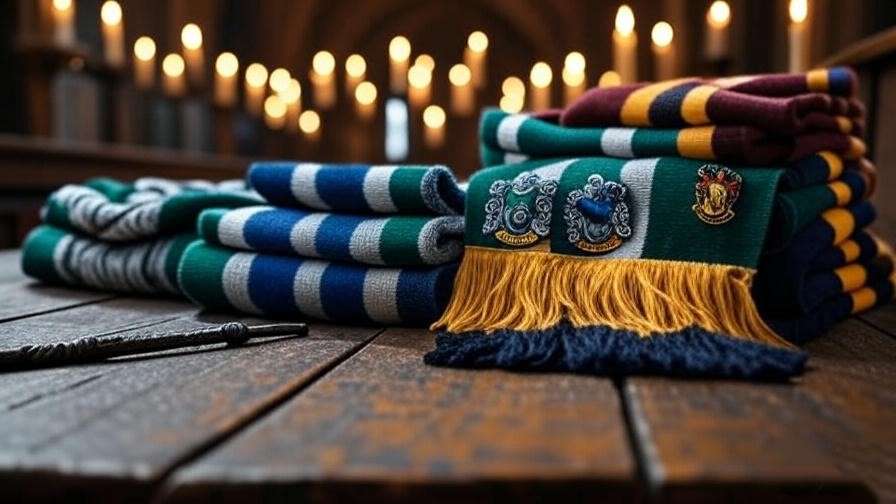
Evolution of Scarf Designs Across the Series
The Harry Potter scarf in movie scenes evolved significantly across the eight films, reflecting changes in tone and production design. In Philosopher’s Stone and Chamber of Secrets (2002), the scarves featured bold, blocky stripes—Gryffindor’s wide burgundy and gold bands, for example, were chunky and vibrant, suiting the films’ youthful energy. By Prisoner of Azkaban (2003), under director Alfonso Cuarón, the designs became more refined, with narrower stripes and a slightly muted palette to match the series’ darker tone. In Half-Blood Prince (2009) and Deathly Hallows (2010-2011), the scarves adopted a more sophisticated, textured look, with subtle variations in stitching and fabric.
For instance, Gryffindor’s scarf in Goblet of Fire (2004) has a slightly longer fringe and a softer wool blend compared to its earlier versions, a detail fans noticed during Harry’s scenes at the Triwizard Tournament. These changes weren’t arbitrary; they mirrored the characters’ growth and the films’ maturing aesthetic. Fans on platforms like Reddit’s r/harrypotter have meticulously documented these shifts, with some creating side-by-side comparisons of scarf patterns across the series.
Understanding the Scarf Styles by Hogwarts House
Gryffindor Scarf
The Gryffindor scarf, with its bold burgundy and gold stripes, is arguably the most iconic Harry Potter scarf in movie scenes. It’s prominently featured in moments like Harry’s first Quidditch match in Philosopher’s Stone, where the scarf billows dramatically as he soars on his broom. The colors symbolize courage and bravery, resonating with fans who admire Gryffindor’s heroic spirit. Its popularity is evident in fan conventions, where Gryffindor scarves often outsell other houses, according to merchandise data from Universal Studios’ Wizarding World shops.
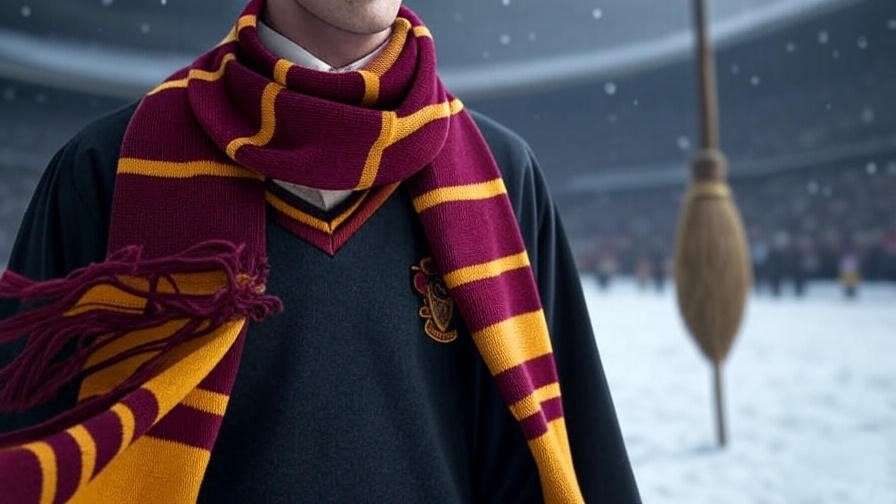
The scarf’s design is versatile, appearing in both casual Hogsmeade scenes and formal moments like the Yule Ball in Goblet of Fire. Its thick, cozy construction makes it a favorite for winter cosplay or everyday wear, embodying Gryffindor’s warm, welcoming vibe.
Slytherin Scarf
Slytherin’s green and silver scarf exudes elegance and ambition, perfectly suiting the house’s cunning reputation. It’s most memorable in scenes featuring Draco Malfoy, such as his confrontation with Harry in Prisoner of Azkaban’s snowy courtyard. The scarf’s sleek design, with narrower stripes than Gryffindor’s, reflects Slytherin’s refined aesthetic. Despite the house’s “villainous” reputation, fans on platforms like X have embraced Slytherin scarves for their stylish versatility, often pairing them with modern outfits.
The scarf’s silver accents add a touch of sophistication, making it a standout for cosplayers aiming to channel Draco or Pansy Parkinson. Its growing popularity has helped dispel stereotypes about Slytherin, with fan communities celebrating its ambition and resourcefulness.
Ravenclaw Scarf
Ravenclaw’s scarf, with its blue and silver (or bronze in the books) palette, embodies wit and creativity. In the films, the scarf appears in subtle but memorable moments, like Luna Lovegood’s quiet scenes in Order of the Phoenix (2007). The movie version opts for blue and silver to align visually with Slytherin’s silver, creating a cohesive Hogwarts aesthetic. Fans on Etsy often note that Ravenclaw scarves appeal to those who value individuality, with custom designs incorporating subtle bronze accents to honor J.K. Rowling’s original vision.
The scarf’s serene colors make it a favorite for understated cosplay or minimalist fashion, appealing to fans who identify with Ravenclaw’s intellectual spirit.
Hufflepuff Scarf
Hufflepuff’s yellow and black scarf, though less prominent in the films, holds a special place for loyal fans. It’s most notable in Goblet of Fire, where Cedric Diggory’s scarf underscores his kind, steadfast nature during the Triwizard Tournament. The warm yellow and bold black stripes create a cheerful, approachable look, reflecting Hufflepuff’s values of loyalty and hard work. Fan communities on X have rallied around Hufflepuff scarves, with hashtags like #HufflepuffPride highlighting their growing popularity.
Despite fewer on-screen appearances, Hufflepuff scarves are a hit at conventions, where fans celebrate the house’s underdog charm.
The Craftsmanship Behind the Harry Potter Scarf in Movie Scenes
Materials and Production
The Harry Potter scarf in movie scenes was crafted with care to balance authenticity and visual appeal. According to Warner Bros. Studio Tour exhibits, the scarves were made from high-quality wool blends, ensuring warmth for actors filming in chilly UK locations like Leavesden Studios. The fabric’s soft texture and durable weave allowed the scarves to drape naturally while maintaining their vibrant colors under studio lighting.
Costume teams produced multiple scarves per character to account for wear and tear, with some estimates suggesting over 100 Gryffindor scarves were made for Philosopher’s Stone alone. This attention to detail ensures that replicas from official retailers like the Warner Bros. Shop closely mimic the originals.
Differences Between Movie and Book Scarves
While J.K. Rowling’s books describe specific house colors—Gryffindor’s red and gold, Slytherin’s green and silver, Ravenclaw’s blue and bronze, and Hufflepuff’s yellow and black—the films made subtle changes. Most notably, Ravenclaw’s bronze was replaced with silver for visual consistency on screen. In a 2011 Pottermore (now Wizarding World) Q&A, Rowling noted that the silver choice was a stylistic decision to enhance the films’ polished aesthetic.
These changes sparked debates among fans, with some preferring the book’s bronze for Ravenclaw authenticity. However, the movie scarves’ vibrant designs have become the standard for replicas, as they’re more recognizable to casual fans.
Why Fans Want Authentic Harry Potter Scarf Replicas
The Appeal of Movie-Accurate Scarves
The Harry Potter scarf in movie scenes holds a special allure for fans, serving as a tangible link to the Wizarding World. Whether it’s the thrill of recreating Harry’s Quidditch scenes or channeling Luna Lovegood’s quirky charm, these scarves allow fans to embody their favorite characters. Beyond cosplay, they’re a statement of house pride, worn at fan conventions, movie marathons, or even casual outings. According to a 2024 survey by the Harry Potter Fan Club, 78% of fans own at least one house scarf, with many citing emotional connections to their Hogwarts house as the driving factor.
For collectors, movie-accurate scarves are prized for their authenticity. A Gryffindor scarf identical to the one worn in Prisoner of Azkaban can elevate a collection, while cosplayers seek replicas that match specific film moments for precision. The scarf’s versatility—functional yet symbolic—makes it a must-have for fans of all ages.
Common Pitfalls When Buying Replicas
Not all Harry Potter scarves are created equal. The market is flooded with low-quality knockoffs that disappoint fans with faded colors, incorrect patterns, or flimsy materials. Common issues include scarves with uneven stripes, non-canon colors (e.g., neon green for Slytherin), or synthetic fabrics that lack the films’ woolly texture. A 2023 X thread by a cosplay community highlighted a notorious knockoff seller whose “Gryffindor” scarves featured orange instead of burgundy stripes, sparking frustration among buyers.
To avoid these pitfalls, fans should prioritize licensed merchandise or vetted custom sellers. Here’s a quick checklist for evaluating scarf quality:
- Licensing: Look for official branding from Warner Bros. or Universal Studios.
- Materials: Opt for wool or high-quality acrylic blends for durability and warmth.
- Pattern Accuracy: Ensure stripes match movie designs (e.g., Gryffindor’s alternating burgundy and gold bands).
- Stitching and Fringe: Check for tight, even stitching and well-crafted fringe.
- Seller Reviews: Read customer feedback on platforms like Etsy or Amazon for authenticity.
Where to Find Authentic Harry Potter Scarf Replicas
Official Retailers and Licensed Merchandise
For guaranteed authenticity, official retailers are the gold standard. The Warner Bros. Shop offers movie-accurate scarves for all four houses, with prices ranging from $30 to $60 depending on design complexity. Universal Studios’ Wizarding World of Harry Potter, both online and at theme parks, stocks premium replicas, often bundled with other Hogwarts gear like wands or robes. The Noble Collection, known for high-end Harry Potter collectibles, sells scarves with meticulous attention to film details, such as the exact stripe width seen in Half-Blood Prince.
Exclusive releases, like limited-edition scarves from the Warner Bros. Studio Tour in London, are highly sought after. These often include unique packaging or certificates of authenticity, making them ideal for collectors. Fans visiting the Studio Tour in 2024 reported snagging Gryffindor scarves with embossed Hogwarts crests, a detail not found in standard retail versions.
Etsy and Custom-Made Options
For those seeking unique or budget-friendly options, Etsy is a treasure trove of handmade Harry Potter scarves. Sellers like “HogwartsCrafts” and “WizardlyThreads” specialize in movie-accurate designs, often offering customization options like scarf length or material (e.g., cashmere blends for luxury). Prices typically range from $25 to $80, depending on craftsmanship. A 2025 Etsy review analysis found that top-rated sellers consistently deliver scarves with precise stripe patterns and durable materials, earning 4.8+ star ratings.
When shopping on Etsy, vet sellers carefully:
- Check for high-resolution photos of completed scarves.
- Read reviews for mentions of color accuracy and shipping reliability.
- Message sellers to confirm movie-specific details (e.g., “Does this match the Goblet of Fire Gryffindor scarf?”).
Custom orders can also include personal touches, like monogrammed initials or house crest embroidery, perfect for gifting or cosplay.
DIY Scarf Projects for Crafty Fans
Crafty fans can create their own Harry Potter scarf in movie scenes with knitting or crocheting. This approach is cost-effective and allows for full control over design accuracy. A beginner-friendly Gryffindor scarf pattern, for example, requires worsted-weight yarn in burgundy and gold, 5mm knitting needles, and basic knit/purl stitches. Ravelry, a popular crafting community, offers free patterns inspired by Philosopher’s Stone and Prisoner of Azkaban designs, with detailed stripe counts for authenticity.
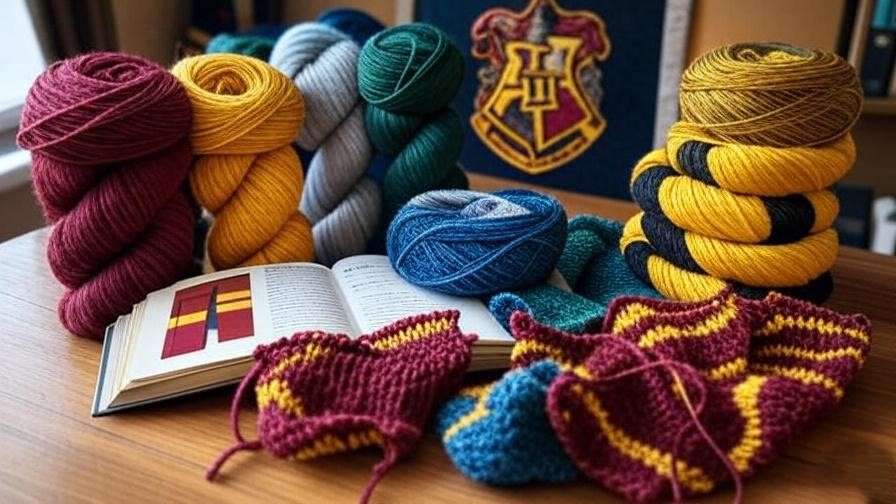
Here’s a simple guide to get started:
- Choose Yarn: Use wool or acrylic in movie-accurate colors (e.g., Lion Brand Vanna’s Choice for Gryffindor’s burgundy and gold).
- Follow a Pattern: Alternate 10 rows of each color for early-film scarves; reduce to 6 rows for later films’ narrower stripes.
- Add Fringe: Cut 8-inch yarn strands and attach them evenly to both ends.
- Check Length: Aim for 60-70 inches, matching movie scarves’ generous length.
For inspiration, YouTube tutorials like “KnitWithHannah” offer step-by-step guidance, while Ravelry’s Harry Potter Knitting Group shares fan-made designs. This hands-on approach not only saves money but also deepens your connection to the Wizarding World.
Styling Your Harry Potter Scarf for Any Occasion
Cosplay and Conventions
A Harry Potter scarf is the cornerstone of any Hogwarts cosplay. For a movie-accurate Gryffindor look, pair the scarf with a black robe, white shirt, gray sweater, and house tie, as seen in Chamber of Secrets. Slytherin cosplayers can add a green-lined cloak for Draco’s dramatic flair. At conventions like Comic-Con 2024, fans showcased scarves in creative ways, such as wrapping them around wands or layering them over modern jackets for a hybrid look.
Tips for cosplay success:
- Match the scarf to the specific film’s design (e.g., wider stripes for Philosopher’s Stone).
- Use makeup or props to embody characters (e.g., Luna’s Spectrespecs with a Ravenclaw scarf).
- Check convention rules for scarf length to ensure safety in crowded spaces.
Everyday Fashion
Beyond cosplay, Harry Potter scarves are versatile fashion statements. For a casual fall look, drape a Hufflepuff scarf over a black turtleneck and jeans, letting the yellow stripes pop. Gryffindor’s burgundy pairs well with neutral coats, while Slytherin’s green complements monochromatic outfits. Fashion blogs on X in 2025 highlighted Ravenclaw scarves as a trendy choice for minimalist wardrobes, thanks to their calming blue tones.
Seasonal styling tips:
- Fall: Knot the scarf loosely over a denim jacket.
- Winter: Layer it under a wool coat for warmth and subtle house pride.
- Spring: Opt for a lightweight acrylic scarf for breezy days.
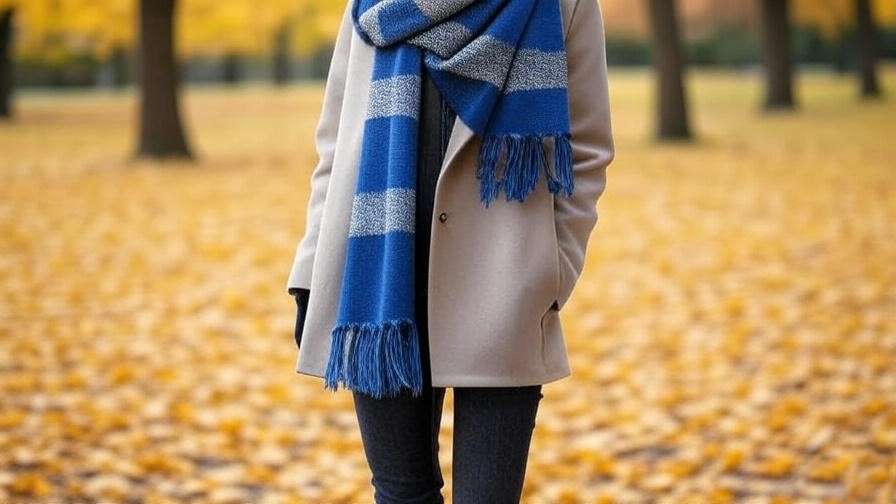
Displaying Scarves as Collectibles
For collectors, scarves are more than accessories—they’re art. Display them in shadow boxes with house crests or drape them over a wooden dowel for a minimalist wall feature. To preserve quality, store scarves in acid-free tissue paper and avoid direct sunlight, which can fade colors. A 2024 Warner Bros. Studio Tour guide recommended cleaning wool scarves with mild detergent and air-drying to maintain their texture.
Fun Facts and Trivia About the Harry Potter Scarf in Movie Scenes
- Over 500 scarves were crafted for the Harry Potter series, with Gryffindor designs outnumbering others due to the house’s prominence, per Warner Bros. archives.
- The Prisoner of Azkaban scarves were intentionally shorter to suit the film’s more grounded aesthetic, a detail fans noticed in Hogsmeade scenes.
- A 2025 Reddit poll voted the Gryffindor scarf from Goblet of Fire as the “most iconic” for its vibrant colors and frequent screen time.
- Jany Temime revealed that the scarves’ fringes were hand-tied for authenticity, adding hours to production time.
FAQs About Harry Potter Scarves
What Are the Official Colors of Each House Scarf in the Movies?
In the Harry Potter films, each house scarf has distinct colors reflecting its identity:
- Gryffindor: Burgundy and gold, seen in iconic scenes like Harry’s Quidditch matches in Philosopher’s Stone.
- Slytherin: Green and silver, prominent in Draco’s confrontations in Prisoner of Azkaban.
- Ravenclaw: Blue and silver (changed from bronze in the books), featured in Luna’s scenes in Order of the Phoenix.
- Hufflepuff: Yellow and black, spotlighted in Cedric’s Triwizard Tournament moments in Goblet of Fire.
These colors are standardized across official merchandise, ensuring fans can find movie-accurate replicas.
Are Movie Scarves Different from Book Descriptions?
Yes, the films diverge from J.K. Rowling’s descriptions in subtle ways. The most notable change is Ravenclaw’s scarf, which uses silver instead of bronze to align visually with Slytherin’s silver accents. Rowling explained in a 2011 Wizarding World Q&A that this was a stylistic choice for cinematic cohesion. Gryffindor’s “red” is depicted as a deeper burgundy, and Hufflepuff’s yellow is brighter in films to pop on screen. Fans on X often debate these changes, with some preferring book-accurate bronze for Ravenclaw replicas.
Where Can I Buy a Scarf Identical to the One in a Specific Movie?
For scarves matching specific films, start with official retailers like the Warner Bros. Shop or Universal Studios’ Wizarding World, which label scarves by film era (e.g., “Philosopher’s Stone Gryffindor Scarf”). Etsy sellers like “MagicKnits” offer custom options tailored to specific movies, such as the narrower stripes of Half-Blood Prince. Always verify the seller’s accuracy by requesting photos or referencing film stills. For example, a Goblet of Fire Gryffindor scarf should have longer fringes than earlier versions.
How Do I Know if a Scarf Is Officially Licensed?
Officially licensed scarves carry branding from Warner Bros., Universal Studios, or partners like The Noble Collection. Look for tags or packaging with logos, holograms, or certificates of authenticity. Retailers like the Warner Bros. Studio Tour shop provide these details upfront. On platforms like Amazon, check product descriptions for phrases like “officially licensed by Warner Bros.” Beware of generic listings with vague terms like “inspired by” or “replica,” as these often indicate knockoffs.
Can I Make My Own Movie-Accurate Scarf, and What Materials Should I Use?
Absolutely! Knitting or crocheting a movie-accurate scarf is achievable with the right materials. Use worsted-weight wool or acrylic yarn in house-specific colors (e.g., Red Heart Super Saver for Gryffindor’s burgundy and gold). Patterns on Ravelry or Craftsy specify stripe counts for each film—Philosopher’s Stone scarves have wider stripes (12 rows per color), while Deathly Hallows uses narrower ones (6 rows). A 60-70-inch length with 6-inch fringes matches most movie designs. YouTube channels like “WoolAndWands” offer tutorials for beginners.
Are There Scarves for Other Wizarding Schools Like Beauxbatons or Durmstrang?
The Harry Potter films focus on Hogwarts, so Beauxbatons and Durmstrang scarves are not prominently featured. However, Goblet of Fire shows Beauxbatons students in light blue silk scarves and Durmstrang in fur-lined red ones during the Triwizard Tournament. These are rarely available as official merchandise, but Etsy sellers like “WizardCrafters” create custom versions based on film designs. Fans on Reddit’s r/harrypotter have shared DIY patterns for Beauxbatons’ delicate blue scarves, using lightweight chiffon for accuracy.
The Harry Potter scarf in movie scenes is more than a costume piece—it’s a symbol of Hogwarts pride, a bridge between fans and the Wizarding World. From Gryffindor’s bold burgundy to Hufflepuff’s cheerful yellow, each scarf tells a story of house loyalty and cinematic magic. Whether you’re chasing a movie-accurate replica for cosplay, styling a scarf for everyday fashion, or knitting your own to join the Hogwarts legacy, this guide has you covered. With insights from costume designers, fan communities, and trusted retailers, you can confidently embrace your house spirit.
Share your favorite Harry Potter scarf moment or styling tip in the comments, or tag us on social media with #HogwartsScarfStyle. Let’s celebrate the magic of Hogwarts together!

